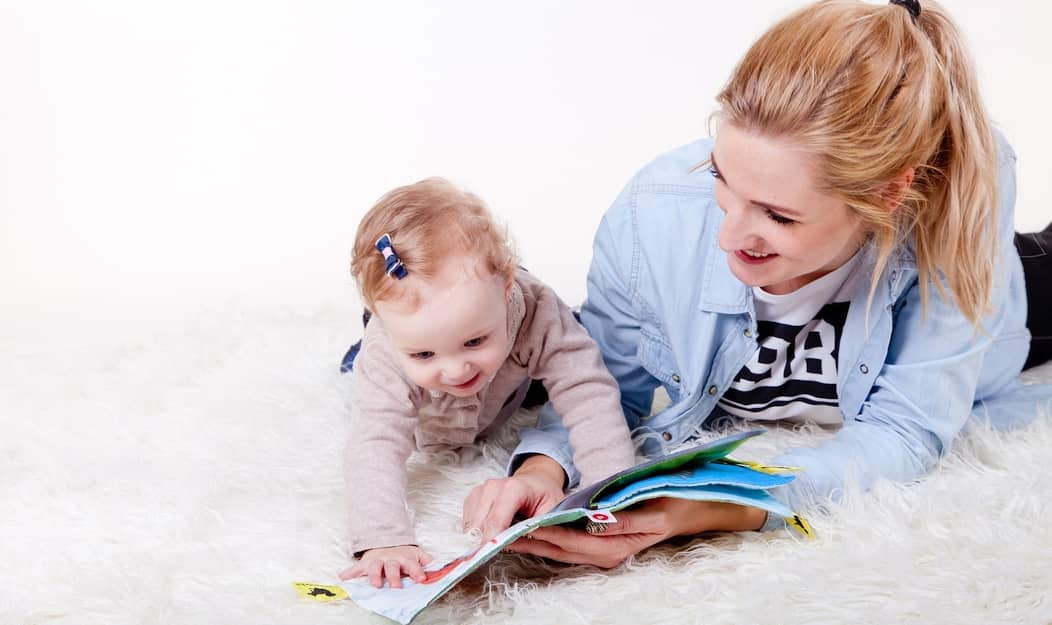Phonics is a way to teach children to read and write by showing them the connection between spoken language sounds (phonemes) and written letters, groups of letters, and syllables (graphemes). Phonics is a reading instruction method in which pupils learn to decode words by listening to and identifying the sounds produced by individual letters and letter combinations. Students are taught to decipher unknown words by following a set of rules, and as a result, it becomes easier to learn to read and understand what has been read. The Phonics reading instruction method is also called the alphabetic principle or the alphabetic code. For more phonics materials, please see: 108 Phonics Lessons, Activities, Classic Primers and Readers and 27 Phonics Worksheets, Activities & Instructional Docs.
Table of Contents:
- Why Use Phonics to Teach Children How to Read
- Three Approaches for Using Phonics
- Phonics Resources for Teaching Children to Read and Learning How to Read
- Phonics Activities and Games
- Conclusion
Why Use Phonics to Teach Children How to Read
Teaching children to read with phonics provides them many advantages. Using Phonics provides the following important language arts skills and benefits:
- Recognizing letters from sounds greatly improves.
- Develop a greater capacity for reading.
- Students sound out unfamiliar words with more ease.
- Improves language learning by expanding vocabulary.
- Improves spelling skills.
- Improves focus and endurance.
- Students become familiar with syllables.
- Improvements in school achievement can be attributed to increased reading comprehension.
- Students receive good understanding of language forms.
- Reading becomes less of a job and more of a pleasure for children as they explore the beautiful world of books.
- Teaches students the fundamental reading abilities needed to read and understand increasingly complex texts.
It has been demonstrated that teaching phonics to pupils of all ages has a major impact on their ability to read. A research published in the Journal of Research in Reading in 2018 found that teaching phonics to first- and third-graders with reading challenges was beneficial. According to a 2019 study published in the Journal of Educational Psychology, preschool training in fundamental phonological awareness and letter knowledge offers a good basis for subsequent reading comprehension achievement in elementary school. Academic achievement in later years is predicted by the capacity to understand what is read by the end of third grade. A pupil who is not a fluent reader at this point is four times more likely than one who is to drop out of high school.
Three Approaches for Using Phonics
Phonics can be taught in a variety of ways. These include the following 3 methods:
- Acquiring the ability to distinguish, hear and recognize of the connections between letters and sounds. The smallest units of sound that can differentiate meaning are called phonemes. For example, there are three letters and three sounds in the word “cat,” for instance: c-a-t, but flower only has four sounds despite having six letters: c a t; whereas “flower” only uses four sounds over its six-letter length.
- Word-level phonics involves mastering the relationships between individual letters and groups of letters to read and spell words. This includes learning the sounds of letters of similar sounds (eg. cat, can, call) and groups of letters as follows:
- Diphthongs (eg. “oy” in “boy” or “ou” in “house”)
- Vowel digraphs (eg. “aw” in “saw” or “ay” in “play”)
- (All vowel groups are digraphs, but some are diphthongs as well.)
- Consonant digraphs (eg. “ch” in “chat” or “th” in “think”)
- Consonant blends (eg. “bl” in “black” or “lp” in “help”)
- Rimes (eg. hat, mat, and sat)
- Students can practice the sounds they’re learning by watching phonics videos, reading books and participating in phonics activities and games.
Phonics Resources for Teaching Children to Read and Learning How to Read
(All files in pdf format, large file sizes are indicated.)
- 488 Phonics Videos (all in one dropbox folder)
- -ed Words – Word Cards
- a-e Phoneme Spotter Comprehension
- a-e Spelling Board Game
- Activities for Tutoring a Pre-Literate Student
- Advanced Phonics, Barksdale Reading Institute
- Basic Speller Student Materials (11.4mb)
- Basic Speller Teacher Materials (4.7mb)
- Beginning Phonics, Barksdale Reading Institute
- Bingo Game Colored Counters
- Bingo Picture And Word Boards
- Bingo Picture And Word Cards
- Bingo Word Boards
- Bingo Word Cards
- Color the Picture that Begins with the Sound
- Commonly Misspelled Word List
- Commonly Misspelled Words
- Compound Words – Word Cards
- Contractions – Word Cards
- Diphthong oi vowel sound
- Diphthong ow vowel sound
- Double Letter Word Cards
- Dr. Seuss’s Sound Words – Playing with Phonics and Spelling
- e-e Phoneme Spotter Comprehension
- e-e Spelling Board Game
- Fill In the Missing Words Split Digraph Activity
- First Grade Phonics Unit 1
- First Grade Word Study Guide
- Foundational Skills to Support Reading in Grades K-3
- How to Teach Children To Read Using Phonics
- i-e Phoneme Spotter Comprehension
- i-e Spelling Board Game
- Kindergarten Word Study Guide
- Lax u vowel sound
- Literacy Teaching Guide – Phonemic Awareness
- Literacy Teaching Guide – Phonics
- Long a vowel sound
- Long e vowel sound
- Long i vowel sound
- Long o vowel sound
- Long u vowel sound
- Matching Words Beginning with Same Sound level 1
- Matching Words Beginning with Same Sound level 2
- o-e Phoneme Spotter Comprehension
- o-e Spelling Board Game
- oi and oy Phonics Lesson
- Phonemic Awareness, Phonics and Word Study, from Vanderbilt University
- Phonics Exercises with Teacher Prompts
- Phonics In Context Lesson
- Phonics Intervention Guide for 2nd and 3rd Grade
- Phonics Knowledge and Instruction
- Phonics Worksheets Footstep Phonics
- Phonics-oriented Word Lists
- Phonological Awareness Picture Cards
- Phonological Awareness, A Guidebook For Parents (4.1mb)
- Reading Comprehension-based Intervention Guide for 2nd Grade
- Reading Foundational Skills Guidance Document, Grades K-2
- Reading Foundations Skills – Learning Letters, Grades K–2 (59mb)
- Reading Foundations Skills Block, Grades K-2
- Reading Intervention Guide for 1st Grade
- Reading Intervention Guide for 2nd Grade
- Schwa vowel sound
- Second Grade Word Study Guide
- Short a vowel sound
- Short e vowel sound
- Short i vowel sound
- Short o vowel sound
- Short u vowel sound
- Silent-letter Words – Word Cards
- Silent Letters
- Sounding Out Word Cards
- Split Digraph Activity Sheet
- Split Digraph Phoneme Spotter Comprehension
- Split Digraphs Table Worksheet
- The Big Green Monster Teaches Phonics in Reading and Writing
- u-e Phoneme Spotter Comprehension
- u-e Spelling Board Game
- Vowel and Consonant Phonemes and Their Letter Representations
- We Love Phonics Presentation
- Why Can’t Words End With J – Phonics Lesson on -dge
- Word Cards – Compound Words
- Word Cards – Contractions
- Word Cards – Double-letter Words
- Word Cards – Silent-letter Words
- Word Cards -ed Words
- Word Lists by Syllable Type (Orton-Gillingham)
- Word Solving Strategies
Phonics Lessons and Activities from FreeReading.net
Sounding Out Activities:
- Beach Ball Word Families
- Buddy Reading
- Chopping sounds
- Long Vowel Search and Sort
- Quick Erase
- Sound Boxes
- Sounding Out Accuracy: Word Swatter Game
- Sounding Out, Alien Word Game
- Sounding Out, Holiday Relay
- Sounding out accuracy, The Sum of the Parts
- Sounds
Word Recognition Activities:
- Word-Form Recognition Accuracy, Giant Typewriter
- Word-Form Recognition Accuracy, Label It
- Word-Form Recognition Accuracy, Memory
- Word-Form Recognition Accuracy, Word Potato
- Word-Form Recognition Accuracy, Word Sorts
- Word-Form Recognition Accuracy, Word War
- Word-Form Recognition Fluency, Word Snake
- Word-Form Recognition Accuracy, Old Maid
- Word-Form Recognition Accuracy, Rock, Paper, Scissors
Advanced Phonics Activities:
- Core Advanced Phonics Activities
- Passages to practice advanced phonics skills, fluency, and comprehension
- Beach Ball Word Families
- Compound Word Fluency, Mix, Mix, Match!
- Compound word accuracy, Compound Word Baseball
- Compound word accuracy, Compound Word Bingo
- Compound word accuracy, Compound Word Memory
- Compound word accuracy, Connect 4 Compound Words
- Compound word accuracy, Snowball Fight!
- Contraction fluency, Mix, Mix, Match!
- Contraction fluency, Word Hunt Tally
- Contraction fluency, bingo
- Contractions
- Double letter accuracy, Human Connect Four
- Finding a word within a word
- Inflected endings
- Introducing Compound Words
- Multisyllabic Puzzle
- Rhyme Around Baseball
- Say it, see it, delete it
- Silent letter accuracy, Sorting
- Sound Boxes
- VCe rule accuracy, “Whispering” Silent E
- What Do You Know
- Word Family Fluency, Take a Roll
- Word Study/ “ed” with Lion and the Mouse
Phonological Awareness Activities:
- Core Phonological Awareness Activities
- Sound Pronunciation Guides
- Alphabet Sound Recognition w/ Motions
- Beach Ball Word Families
- Building a sentence
- Chop those sounds
- Chopping sounds
- Finding Initial Sounds
- Identification of Short Vowels
- Identify and Generating Rhyming Words, Bingo
- Identifying Sounds in Words with Elkonin Boxes
- Identifying and Generating Rhyming Words, A Story About Fred
- Identifying and Generating Rhyming Words, Craft Stick Game
- Identifying and Generating Rhyming Words, Find the Rhyme
- Identifying and Generating Rhyming Words, Memory
- Identifying and Generating Rhyming Words, Rhyme Rally
- Initial Sound Accuracy, Guess What I’m Thinking Game?
- Initial Sound Accuracy, Same Sound!
- Initial Sound Memory Game
- Introduce Onset-rime Blending
- Introduce Sh
- Introduce sh
- Irregular Word Fluency, Memory
- Letter Sound Song
- Letter/sound memory
- Making and Breaking Words
- Nonsense words
- Onset-Rime Segmenting, The Take-Away Game
- Oral Blending Accuracy, Suitcase Game
- Oral Blending and Segmenting, Lucky Dip
- Oral Blending, Riddle Game
- Oral Segmentation Accuracy, Word Race
- Oral Segmenting Accuracy, Aliens of Paz Picture Activity
- Phoneme Manipulation, Picture Hunt
- Phoneme segmenting fluency
- Program 101-1, Week 21
- Quick Erase
- Rhyme Around Baseball
- Rhyming Words
- Sand Tiles
- Say IT Move IT
- Say Listen and Clap Center Activity
- Segmenting Syllables, Syllable Slap!
- Segmenting Syllables, Treasure Box Game
- Segmenting Syllables, Word Split Stomp
- Slate Races – Segmenting
- Smartboard ID last sound
- Sound Boxes
- Stretching sounds
- Syllable Walk
- Wacky Wipe-offs
- What’s the sound?
- Word swat
- Workshop activity
Phonics Activities and Games
These phonics activities and games are engaging and fun ways to help students develop their phonics skills with letters, letter groups, sounds and words. Teachers and parents can adapt these activities to meet the needs of their students and create new activities that cater to their individual learning styles and abilities. The point of these phonics games and activities is to show how to make phonics and learning to read fun. Using games and activities has been found to boost learning in a number of studies. When you suggest, “Let’s play a game,” look at how quickly they will jump.
- Phonics Puzzles: You can create puzzles that require students to match letters to their corresponding sounds. For example, a puzzle may have a picture of a cat with the letters “c,” “a,” and “t” scrambled up. Students need to rearrange the letters to spell the word and match each letter to its sound.
- Word Family Flip Books: Teachers can create flip books that focus on word families, such as the “at” family (cat, hat, sat, etc.). Students can flip through the book and practice reading each word. This activity helps students recognize patterns in words and reinforces their phonics skills.
- Letter Sound Bingo: Create bingo cards with letters or groups of letters on them. Students mark the corresponding sound when the teacher calls it out. This game helps students learn to associate letters with their sounds and recognize patterns in words.
- Roll and Read: This ia a game where students roll a dice with letters on it and then read a word that corresponds to the letter on the dice (have a word list ready to use). For example, if a student rolls a “c,” they may need to read a word like “cat” or “can.” This game helps students practice recognizing letters and sounds and improves their reading fluency.
- Phonics Go Fish: To play this game, you can either make or purchase two sets of alphabet flash cards. Once you have the cards ready, shuffle them and pass five cards to each player before taking turns asking for specific letters. Playing like regular Go-Fish will help your child practice recognizing different letter combinations as well as increase their vocabulary by learning new words that start with particular sounds.
- Sticky Notes: Using sticky notes to teach children is an interactive and fun activity that can be done at home. Start by giving your child several sticky notes and writing a letter on each one. Have the child put the note on objects in your house that start with the letter, like using “b” for bed or “ch” for chair. You could also simply write words, such as pot, instead of individual letters. This activity will not only help kids learn their ABCs but also reinforce word recognition skills while having fun in the process.
- Segmenting Words: An easy way to practice pronunciation, spelling and build vocabulary. To play, one person says the word in segments (for example: /sss/ /mmm/ /ah/ /lll/) and the other person has to guess what it is (in this case it would be ‘small’). This game can get more challenging as you increase the length of words or use different languages. You can also have fun by making up your own rules like awarding points for each correct answer or setting time limits on guessing.
- Story Ball: To play Story Ball, all you need is an inflatable beach ball and a permanent marker. In each of the colored sections of the ball write one of the following story prompts: “Who?” “Where?” “Beginning?” “Middle?” “End?” “Favorite Part?” Then toss it back and forth – whoever catches it should answer the prompt that shows up on top. You can keep playing until all of these have been addressed, or come up with new ones as you play the game.
- Sight Word Hopscotch: Sight Word Hopscotch is a fun way to practice sight words – all you need is some sidewalk chalk and your favorite sight word list. First, draw a hopscotch board on the ground with the chalk. Then write one of your sight words into each square. Finally, read out loud each word as you jump into its corresponding square. It’s an entertaining way to learn new vocabulary and get some exercise at the same time.
- Phonics Relay: This game is easy and fun to set up – just take six pieces of paper, write one letter or combination of letters on each, then tape them to a wall. Then players can take turns calling out sounds while the other player runs over and taps the correct letter or letters with their finger. For an extra challenge, they can try hopping, skipping or tiptoeing instead! This game helps children develop important reading skills in an active way that keeps them engaged and excited about learning.
- Word Hunt: Word Hunt is a fun and interactive way to help kids learn new words. To begin, prepare two sets of index cards with one word per card. Place the first set aside and hide the second set in various places around your house or yard. Then, pick a card from the first set and read it out loud together. The goal is then for you both to search for the hidden card that features that same word.
- Phonics Scavenger Hunt: Teachers and parents can create a phonis scavenger hunt where students search for objects that start with a specific letter, digraphs, consonant blends or sound. For example, if the focus is on the letter “s,” students may need to find objects like a sock, a spoon, or a stapler. For digraphs, use letter combinations such as ch, sh, th and ph, and then start by pulling out a card and going over the sound that it makes with your child. Then look for items that begin with this sound – like ‘chair’ or ‘shoe’ This activity helps students recognize letters and sounds in everyday objects and reinforces their phonics skills.
- Words and Sentences Scavenger Hunt: This activity itakes some planning, but it’s worth the effort. Start by writing simple words or complete sentences on their reading level for each clue. For example: look under the kitchen rug for your first clue; open the refrigerator for your next one; look under your bed, go to the bathtub and so on until you reach their treasure at last! Leave them with something special like candy or another treat as an added reward when they finish.
Conclusion
In conclusion, phonics is an essential tool in teaching children how to read. By breaking down words into individual sounds and then blending them together, children more easily understand the structure of language and learn to read quicker. There are plenty of phonics resources available for teachers and parents looking for help with reading lessons, as well as videos and activities and games that can be used during class time or at home to reinforce what’s been learned. With so many resources at our disposal, it’s understandable why so many teachers opt for a more phonics-based approach when instructing students in reading.
– love learning -your best ed lessons guide, Scott




